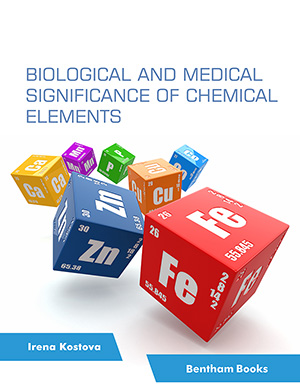Abstract
Background: Medicinal plants have been used in medicine for the treatment of numerous diseases due to their medicinal properties and pharmacological activities. The popularity of herbal- based drugs in the health sector has been increasing due to patient compliance and cost-effectiveness. Herbal drugs derived from plant and animal sources have been used in the Ayurvedic, Homeopathic, and Naturopathic systems of medicine. Medicinal plants have been used as fuel, clothing, shelter, and food material worldwide since a very early age. Phytoconstituents are pure plant chemicals found in different parts of the plant material. Flavonoids are an important class of phytochemicals found in medicinal plants and their derived products.
Methods: In order to understand the biological significance of tricetin, the present study collected and analyzed scientific data on tricetin medicinal importance and pharmacological activities. Literature databases such as Google, PubMed, Science Direct, and Scopus have been searched using terms tricetin and flavonoid. All the scientific information has been collected from these databases to know the biological importance of tricetin. Analytical data of tricetin have also been collected and analyzed in the present work to know the isolation, separation, and identification procedure of tricetin.
Results: Scientific data analysis of different research work revealed the presence of tricetin in Triticum dicoccum, Lathyrus pratensis, Eucalyptus globules, Thuja occidentalis, and Metasequoia glyptostroboides. Scientific data analysis signified the biological importance of tricetin against different forms of cancerous disorders, human osteosarcoma, glioblastoma multiforme, human breast adenocarcinoma, human non-small cell lung cancer, and liver cancer. Scientific data analysis also signified the biological potential of tricetin against inflammation, neurodegenerative diseases, atherosclerosis, diabetes, and respiratory syncytial virus infection. Scientific data analysis revealed the biological importance of tricetin against multidrug resistance and free radicals.
Conclusion: Scientific data analysis revealed the biological importance and pharmacological activities of tricetin against various forms of human disorders, including cancer, inflammation, neurodegeneration, atherosclerosis, and diabetes.
Keywords: Cancer, flavonoid, tricetin, inflammation, neurodegenerative, atherosclerosis, diabetes.
[http://dx.doi.org/10.1016/j.mefs.2012.02.007]
[http://dx.doi.org/10.2174/1574891X13666180913154355] [PMID: 30210007]
[http://dx.doi.org/10.1007/s11655-013-1595-3] [PMID: 24092244]
[http://dx.doi.org/10.1093/ecam/nem096] [PMID: 18227931]
[http://dx.doi.org/10.1016/S2221-6189(13)60123-7]
[http://dx.doi.org/10.3390/molecules21050559] [PMID: 27136524]
[http://dx.doi.org/10.1007/s10616-016-0041-8] [PMID: 27905025]
[http://dx.doi.org/10.1016/j.bjbas.2017.05.009]
[http://dx.doi.org/10.2174/2215083804666180416124949]
[http://dx.doi.org/10.1007/s11655-014-1960-x] [PMID: 25501296]
[http://dx.doi.org/10.1021/jf991166q] [PMID: 10820049]
[http://dx.doi.org/10.1016/j.foodres.2018.02.017] [PMID: 29580480]
[http://dx.doi.org/10.1016/j.foodchem.2013.08.068] [PMID: 24128495]
[http://dx.doi.org/10.1021/jf034990u] [PMID: 14733497]
[http://dx.doi.org/10.3390/molecules17021652] [PMID: 22314384]
[PMID: 18841768]
[http://dx.doi.org/10.1515/znc-2002-5-607] [PMID: 12132682]
[http://dx.doi.org/10.1002/pca.693] [PMID: 12693635]
[http://dx.doi.org/10.1016/S0031-9422(00)00355-1] [PMID: 11198823]
[http://dx.doi.org/10.1007/BF02977002] [PMID: 12510836]
[http://dx.doi.org/10.1042/bj1300141] [PMID: 4655415]
[http://dx.doi.org/10.1021/np990063z] [PMID: 10479333]
[http://dx.doi.org/10.1248/cpb.44.2086] [PMID: 8945774]
[http://dx.doi.org/10.1177/1934578X0900401214]
[http://dx.doi.org/10.1016/j.phytochem.2003.11.013] [PMID: 15081303]
[http://dx.doi.org/10.1515/znc-2002-9-1031]
[http://dx.doi.org/10.1021/jf000277i] [PMID: 11052728]
[PMID: 15481245]
[http://dx.doi.org/10.1371/journal.pone.0207212] [PMID: 30475819]
[http://dx.doi.org/10.3390/ijms18081667] [PMID: 28758971]
[http://dx.doi.org/10.1155/2019/4695381]
[http://dx.doi.org/10.3892/ijo.2015.2915] [PMID: 25738754]
[http://dx.doi.org/10.1104/pp.15.00566] [PMID: 26082402]
[http://dx.doi.org/10.1177/1934578X0800300812]
[http://dx.doi.org/10.1016/j.intimp.2020.106224] [PMID: 31991371]
[http://dx.doi.org/10.1517/14728222.2015.1075509] [PMID: 26245494]
[http://dx.doi.org/10.1002/tox.22380] [PMID: 27860196]
[http://dx.doi.org/10.1021/jf901053x] [PMID: 19705844]
[http://dx.doi.org/10.1021/jf103159r] [PMID: 21067180]
[http://dx.doi.org/10.1016/j.phymed.2013.02.004] [PMID: 23537747]
[http://dx.doi.org/10.3390/molecules25245850] [PMID: 33322312]
[http://dx.doi.org/10.1016/j.bbrc.2009.03.071] [PMID: 19292976]
[http://dx.doi.org/10.1371/journal.pone.0116409] [PMID: 25790236]
[http://dx.doi.org/10.3945/jn.108.102756] [PMID: 19321592]
[http://dx.doi.org/10.1093/jn/137.10.2190] [PMID: 17884996]
[http://dx.doi.org/10.1016/j.taap.2019.114617] [PMID: 31176653]
[http://dx.doi.org/10.1016/j.ijbiomac.2016.11.062] [PMID: 27871793]
[http://dx.doi.org/10.1016/j.jep.2019.111905] [PMID: 31022565]
[http://dx.doi.org/10.1080/14786419.2018.1446009] [PMID: 29502447]
[http://dx.doi.org/10.1016/j.ejphar.2018.05.021] [PMID: 29782863]
[http://dx.doi.org/10.1248/bpb.b15-00489] [PMID: 26521830]
[http://dx.doi.org/10.1155/2015/301635] [PMID: 25879022]
[http://dx.doi.org/10.1016/j.foodchem.2012.12.021] [PMID: 23497885]
[http://dx.doi.org/10.1016/j.micpath.2019.103928] [PMID: 31843547]
[http://dx.doi.org/10.1016/j.saa.2018.01.083] [PMID: 29428644]
[http://dx.doi.org/10.1016/j.jtcme.2016.11.003] [PMID: 28725632]
[http://dx.doi.org/10.1007/s13659-012-0014-3]
[http://dx.doi.org/10.15171/jhp.2018.01]
[http://dx.doi.org/10.2174/1573407214666180511153438]































